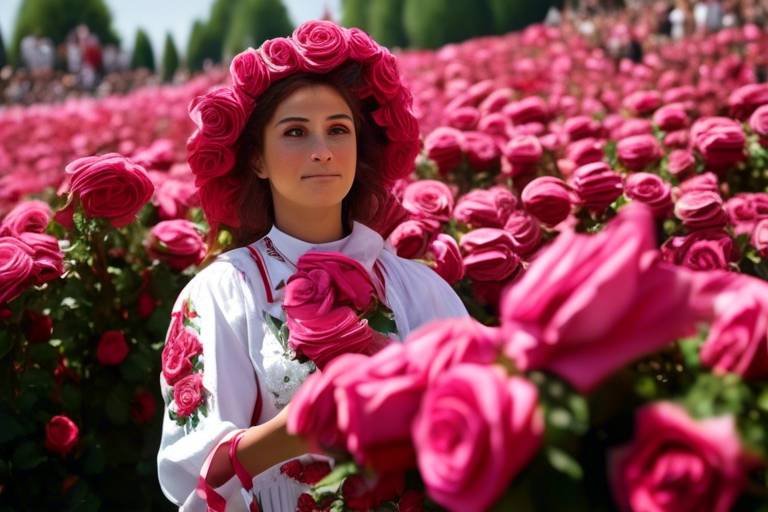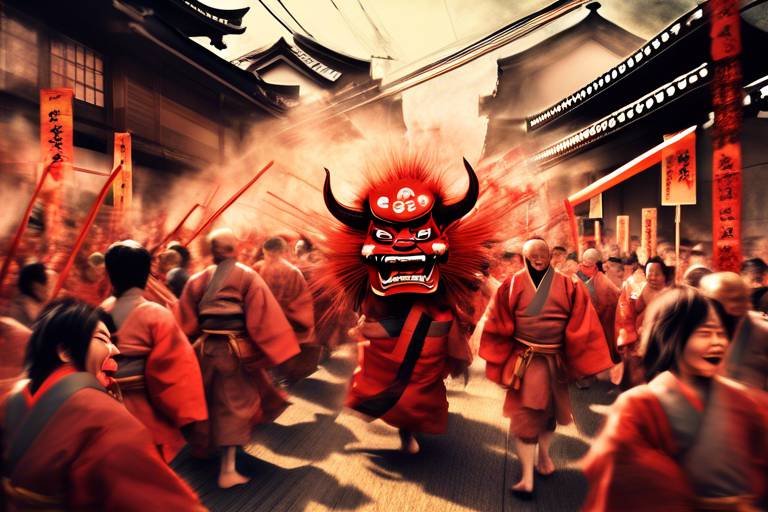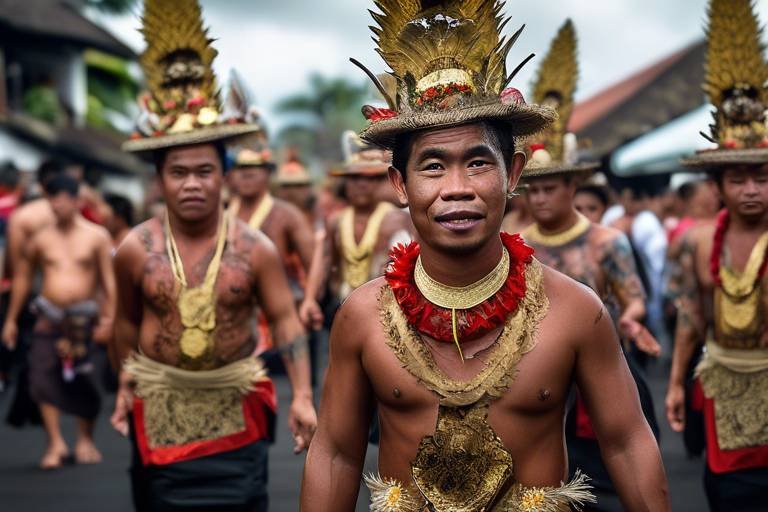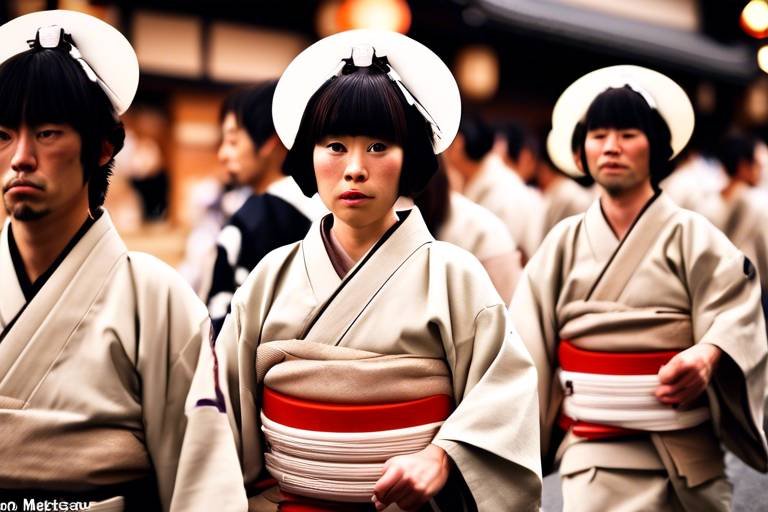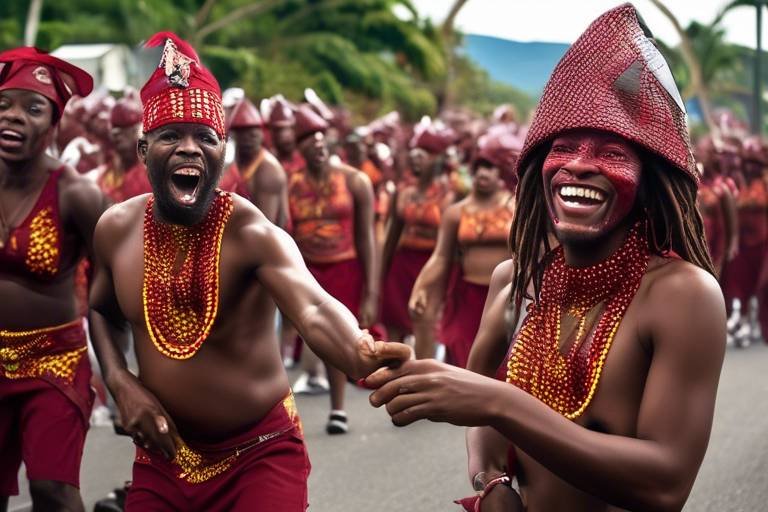The Vibrant Culture of Brazil's Festa Junina
Step right up and immerse yourself in the vibrant culture of Brazil's Festa Junina! This colorful and lively festival is a true explosion of traditions, blending Catholic influences with indigenous and Afro-Brazilian customs. It's a celebration like no other, filled with music, dance, delicious food, and a sense of community that will leave you in awe.

Origins and History
Exploring the rich traditions, colorful celebrations, and unique customs of Brazil's Festa Junina, a festival that blends Catholic traditions with indigenous and Afro-Brazilian influences.
The origins of Festa Junina can be traced back to the Portuguese colonization of Brazil, where Catholic traditions intertwined with local customs and indigenous celebrations. The festival's roots can be found in the European Midsummer festivals, which were brought to Brazil by the Portuguese settlers. Over time, Festa Junina evolved to incorporate elements of indigenous rituals and Afro-Brazilian influences, creating a vibrant and unique cultural celebration.

Traditional Foods and Drinks
When it comes to Brazil's Festa Junina, the traditional foods and drinks play a significant role in enhancing the festive spirit and cultural experience. One of the most beloved treats during this celebration is canjica, a sweet and creamy dish made from hominy corn, milk, sugar, and often flavored with coconut and cinnamon. This hearty dessert is a staple at Festa Junina gatherings, offering a comforting and indulgent taste of Brazilian cuisine.
Another popular delicacy enjoyed during Festa Junina is paçoca, a peanut-based sweet that is both crunchy and rich in flavor. This traditional treat is made by mixing ground peanuts with sugar and sometimes cassava flour, creating a delightful confection that is perfect for satisfying sweet cravings during the festivities.
As for beverages, no Festa Junina celebration is complete without quentão, a hot and spicy drink that warms both the body and soul. This traditional Brazilian drink is a blend of cachaça (sugarcane spirit), spices like cloves and cinnamon, and sweeteners such as sugar or honey. Quentão is often served steaming hot in large communal pots, inviting guests to gather around and enjoy its invigorating warmth.

Music and Dance
When it comes to Festa Junina, one cannot help but be captivated by the vibrant music and lively dance performances that form an integral part of the festivities. The traditional quadrilha dance, reminiscent of European square dances, takes center stage during Festa Junina, with participants dressed in colorful costumes and moving to the rhythm of lively music.
Forró, a genre of music that originated in Northeastern Brazil, is a staple of Festa Junina celebrations, infusing the air with infectious beats that invite everyone to join in the merriment. The accordion, zabumba, and triangle are commonly used instruments in forró bands, creating a unique sound that sets the tone for a night of dancing and revelry.
As the music fills the air, participants of all ages come together to dance the night away, creating a joyous atmosphere that is hard to resist. The energy and excitement of the music and dance performances at Festa Junina bring people together, fostering a sense of community and shared celebration.
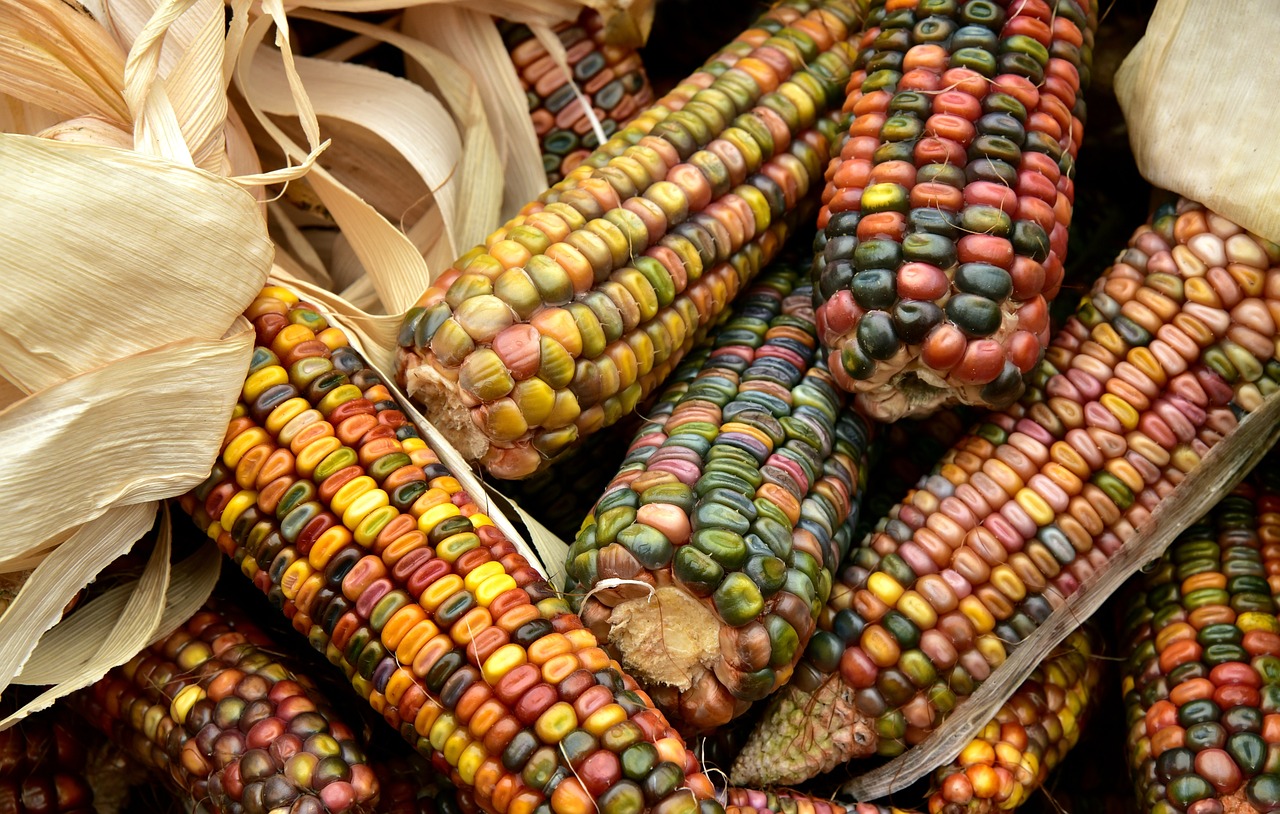
Decorations and Costumes
When it comes to Festa Junina, the vibrant decorations and colorful costumes play a crucial role in setting the festive atmosphere. The celebrations are adorned with an array of eye-catching decorations that reflect the joy and liveliness of the festival. One of the most iconic decorations is the papel picado, intricately cut paper banners that hang overhead, adding a whimsical touch to the surroundings. These decorative banners come in various shapes and sizes, featuring intricate designs and bright colors that catch the eye of attendees.
Furthermore, participants of Festa Junina often don traditional costumes that are steeped in history and tradition. Men can be seen wearing checkered shirts paired with straw hats, while women don colorful dresses with matching checkered patterns. These costumes harken back to the rural origins of the festival, evoking a sense of nostalgia and authenticity. The attire worn during Festa Junina not only adds to the visual spectacle but also serves as a way to honor the festival's roots and heritage.
In addition to papel picado and traditional attire, the venues where Festa Junina is celebrated are often adorned with an array of thematic decorations. Colorful balloons, streamers, and lanterns create a festive ambiance, while makeshift stalls selling handmade crafts and trinkets add to the charm of the event. The overall aesthetic of Festa Junina is a delightful blend of rustic charm and vibrant colors, creating a visually appealing backdrop for the festivities.
Moreover, the costumes worn during Festa Junina are not just for show; they also hold cultural significance and reflect the regional diversity of Brazil. Different regions may have variations in costume styles and colors, showcasing the unique cultural heritage of each area. The costumes and decorations at Festa Junina serve as a visual representation of Brazil's rich cultural tapestry, blending indigenous, European, and African influences into a harmonious celebration of diversity.
Overall, the decorations and costumes at Festa Junina are not merely ornamental but integral components that contribute to the festive spirit and cultural richness of the event. They serve as a visual feast for the eyes, transporting participants into a world of color, tradition, and community spirit. The vibrant decorations and traditional costumes are a testament to the enduring legacy of Festa Junina as a beloved cultural tradition that continues to unite people in joyous celebration.
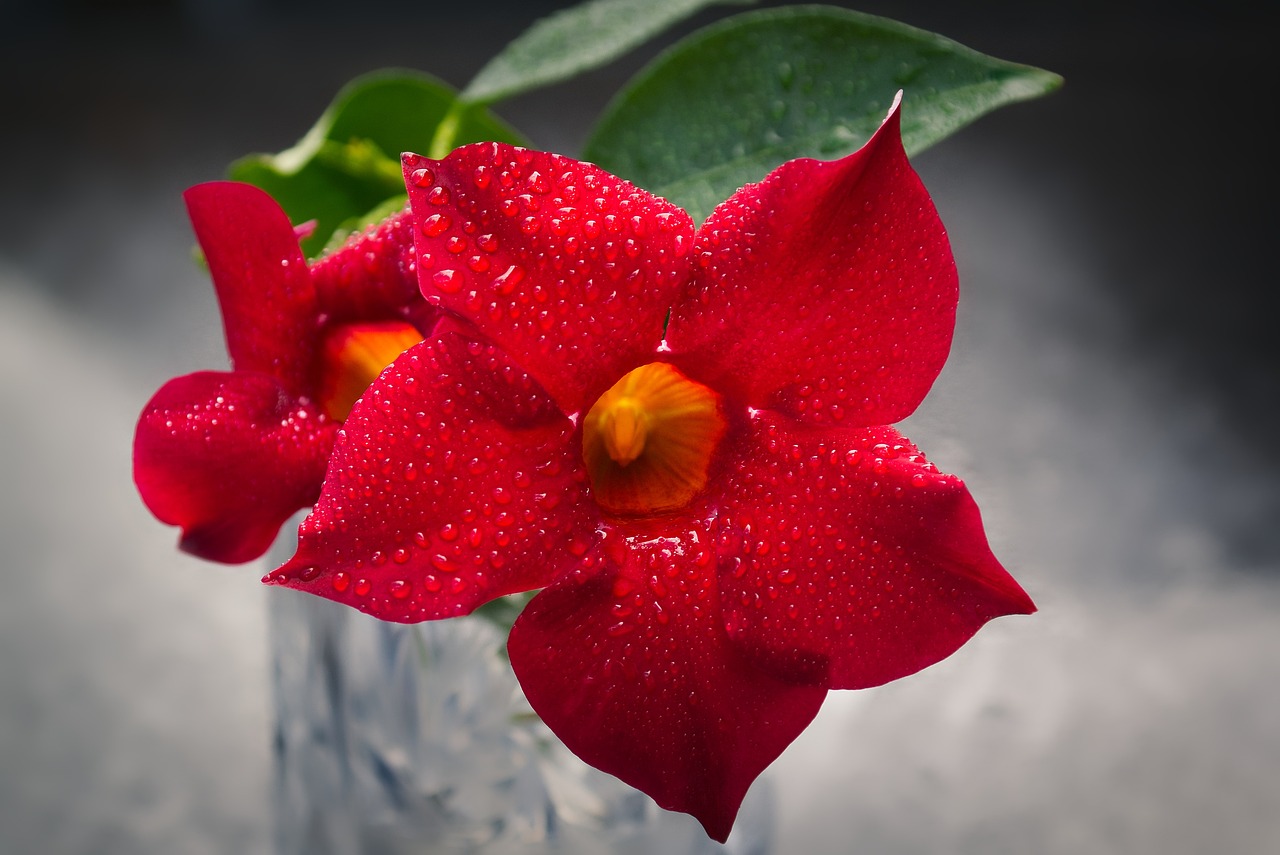
Regional Variations
When it comes to Festa Junina, Brazil's diverse regions add their own unique flavors and traditions to the festivities, creating a tapestry of cultural richness across the country. From the northern state of Amazonas to the southern region of Rio Grande do Sul, each area puts its own spin on this vibrant celebration.
In the northeastern region, known for its strong Afro-Brazilian influence, Festa Junina takes on a lively and colorful character. Here, you can expect to see energetic dance performances infused with African rhythms and vibrant costumes that reflect the region's rich heritage. Traditional dishes like acarajé, a deep-fried bean fritter, and vatapá, a flavorful seafood stew, are staples of the festivities.
Heading to the central-western states, such as Mato Grosso and Goiás, you'll encounter a blend of indigenous traditions with elements of Portuguese and Spanish influence. The celebrations here often feature unique dances inspired by the region's cowboy culture, accompanied by hearty dishes like pamonha, a savory corn paste wrapped in corn husks, and pequi, a spiky fruit used in various culinary creations.
In the southern states like Paraná and Santa Catarina, Festa Junina takes on a more European flair, reflecting the strong influence of Italian and German immigrants in the region. Expect to find a variety of pasta dishes, sausages, and rich desserts like sagu, a tapioca pudding served with wine sauce. The celebrations here may also include traditional folk dances brought over by European settlers.
Meanwhile, in the Amazon region, Festa Junina embraces the bountiful flavors of the rainforest, with dishes featuring exotic fruits, fresh fish, and unique ingredients like tapioca flour. The festivities here are a vibrant mix of indigenous traditions and Catholic rituals, creating a truly immersive cultural experience.

Religious Significance
When it comes to Festa Junina, the religious significance plays a crucial role in shaping the festival's customs and traditions. This vibrant celebration is deeply rooted in Catholicism, with a particular focus on honoring saints such as Saint John the Baptist. The festival typically takes place around the time of the Catholic feast day of Saint John, which falls on June 24th, marking the midsummer solstice. This connection to the Catholic faith adds a spiritual dimension to the festivities, with prayers, processions, and rituals that pay homage to the religious origins of Festa Junina.
Moreover, Festa Junina also reflects a unique blend of Catholic and indigenous beliefs, creating a syncretic celebration that showcases the cultural diversity of Brazil. The incorporation of indigenous elements, such as rituals and symbols, adds a rich layer of meaning to the festival, highlighting the fusion of different cultural influences throughout history. This fusion of religious and cultural practices not only adds depth to the festivities but also underscores the importance of diversity and inclusion in Brazilian society.

Modern-Day Celebrations
Modern-day celebrations of Festa Junina in Brazil have evolved into grand events that bring communities together in joyous festivities. From large-scale gatherings in cities to intimate parties in homes, the spirit of Festa Junina continues to thrive across the country. The celebrations often feature vibrant decorations, lively music, traditional dances, and an abundance of delicious food and drinks.
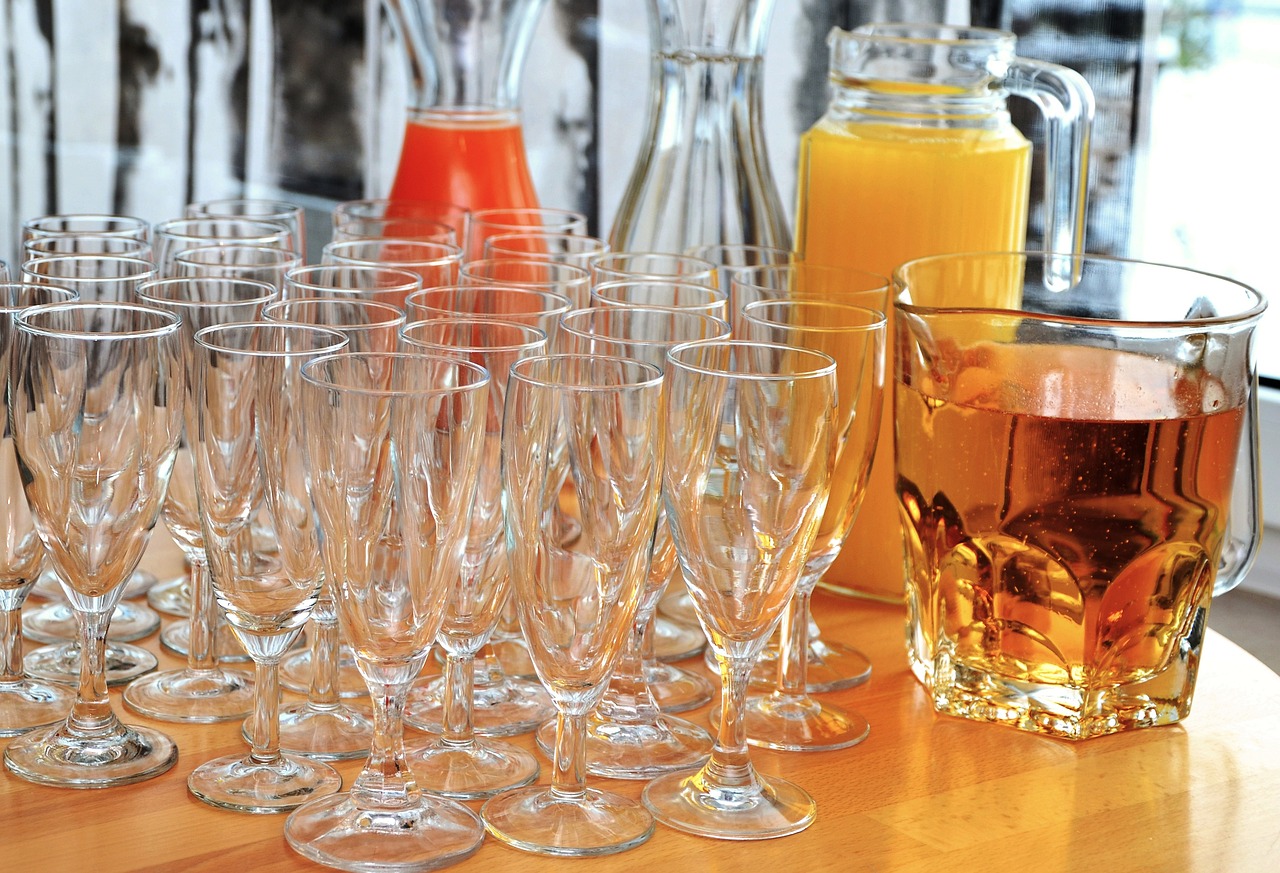
Impact and Cultural Significance
When it comes to the impact and cultural significance of Festa Junina, it's impossible to understate the profound effect this festival has on Brazilian society. This vibrant celebration serves as a cultural touchstone, deeply rooted in the country's history and traditions. Festa Junina not only brings communities together but also acts as a powerful symbol of Brazil's rich cultural heritage.
One of the key impacts of Festa Junina is its ability to strengthen social bonds and foster a sense of unity among Brazilians. The festival provides an opportunity for people from all walks of life to come together, celebrate, and share in the joy of the festivities. Whether in large urban centers or small rural villages, Festa Junina serves as a unifying force that transcends social barriers and connects people through shared experiences.
Furthermore, Festa Junina plays a crucial role in preserving and promoting Brazilian traditions and customs. By showcasing traditional foods, music, dance, and attire, the festival helps keep cultural practices alive and relevant in modern times. Through generations of celebrating Festa Junina, Brazilians pass down their heritage and values, ensuring that their cultural identity remains strong and vibrant.
Moreover, the cultural significance of Festa Junina extends beyond its traditional roots, influencing various aspects of Brazilian society. From arts and entertainment to tourism and education, the festival's impact can be felt across different sectors. Festa Junina not only serves as a source of pride for Brazilians but also attracts visitors from around the world, showcasing the country's unique cultural tapestry.
In conclusion, Festa Junina stands as a testament to Brazil's cultural richness and diversity, embodying the spirit of unity, tradition, and celebration. Its lasting impact on Brazilian society underscores the festival's importance as a cherished tradition that continues to thrive and evolve with each passing year.
Frequently Asked Questions
- What is Festa Junina?
Festa Junina is a traditional Brazilian festival that combines Catholic traditions with indigenous and Afro-Brazilian influences. It is celebrated in honor of Saint John the Baptist and features colorful decorations, delicious food, lively music, and dance performances.
- When is Festa Junina celebrated?
Festa Junina is typically celebrated throughout the month of June, with the peak of festivities around June 23rd, which is the feast day of Saint John the Baptist. However, celebrations may vary in different regions of Brazil.
- What are some traditional foods and drinks served during Festa Junina?
Some traditional foods and drinks enjoyed during Festa Junina include canjica (hominy corn pudding), paçoca (peanut candy), and quentão (a hot drink made with cachaça, spices, and fruits).
- What are the main music and dance forms associated with Festa Junina?
The main music and dance forms of Festa Junina include the quadrilha dance, a lively performance that tells a love story, and forró music, a genre that keeps the party atmosphere vibrant and energetic.
- How is Festa Junina celebrated in modern-day Brazil?
In modern-day Brazil, Festa Junina is celebrated with large-scale events in cities and towns, as well as smaller gatherings in schools, communities, and homes. It remains a cherished tradition that brings people together to celebrate their cultural heritage.



